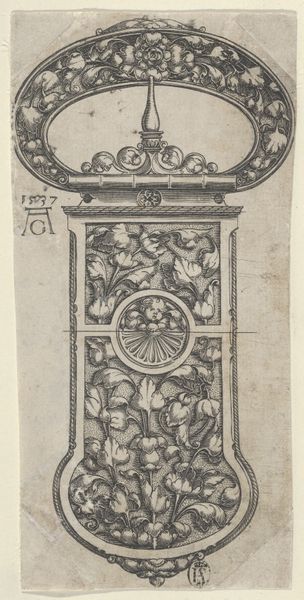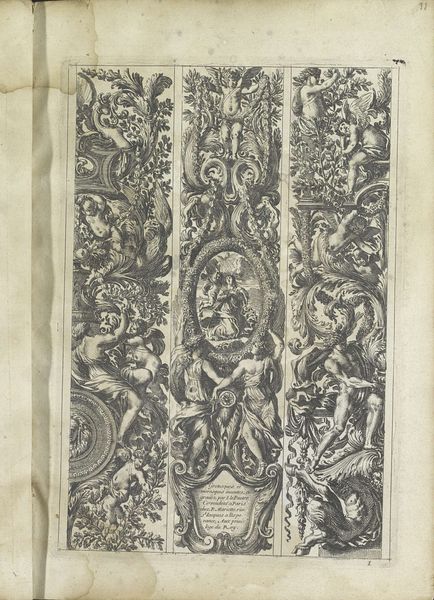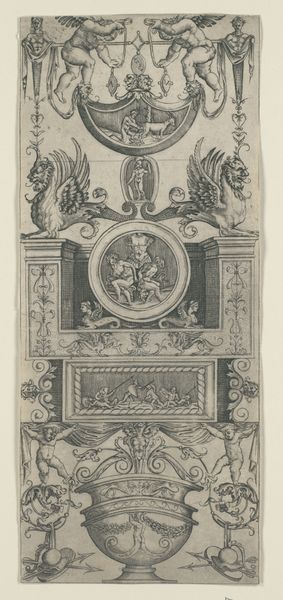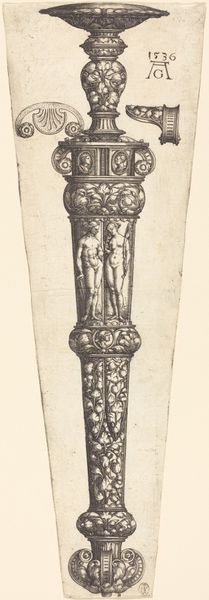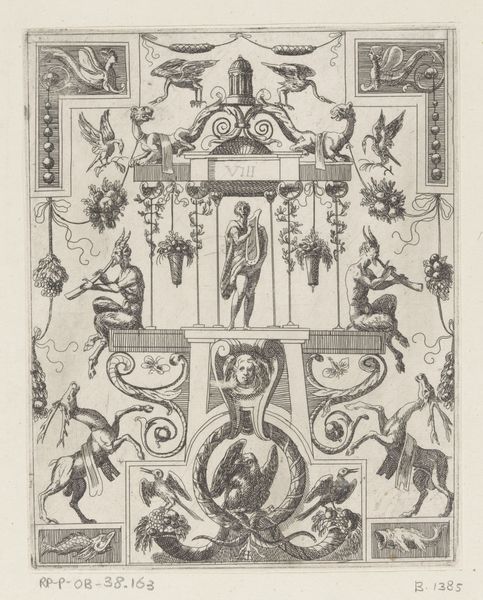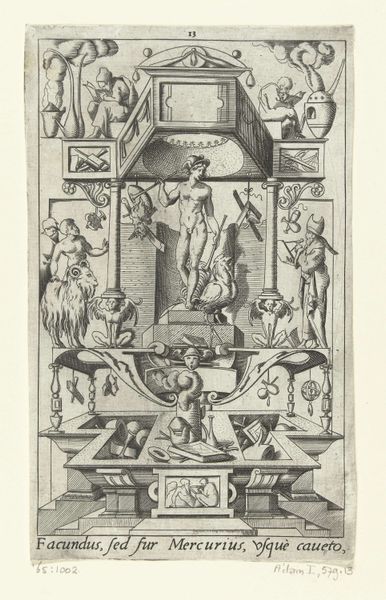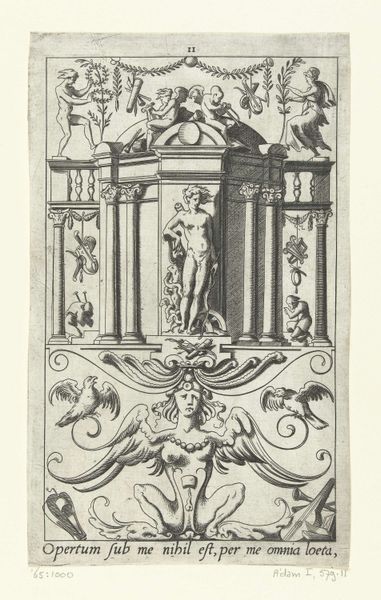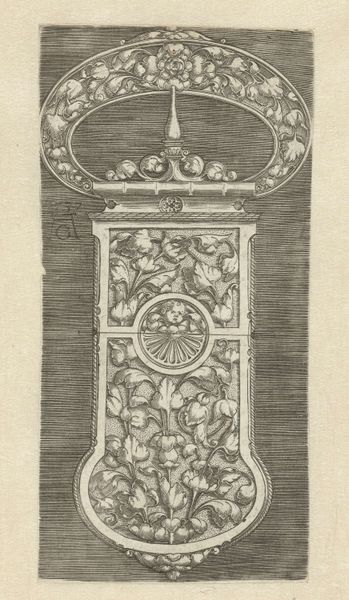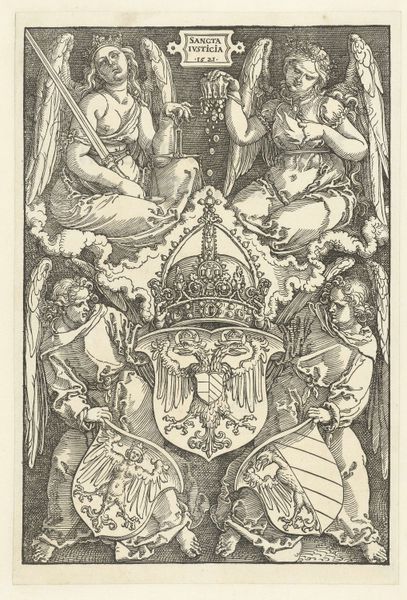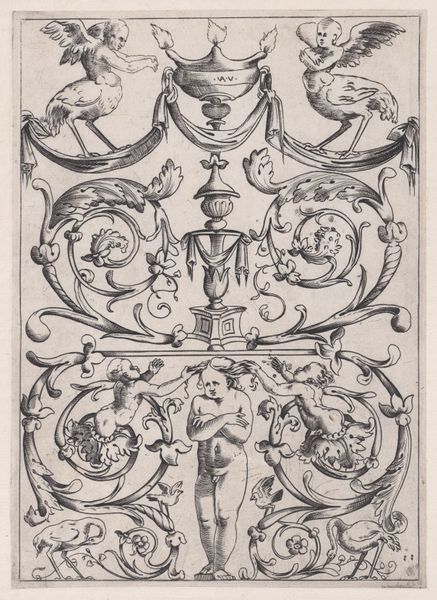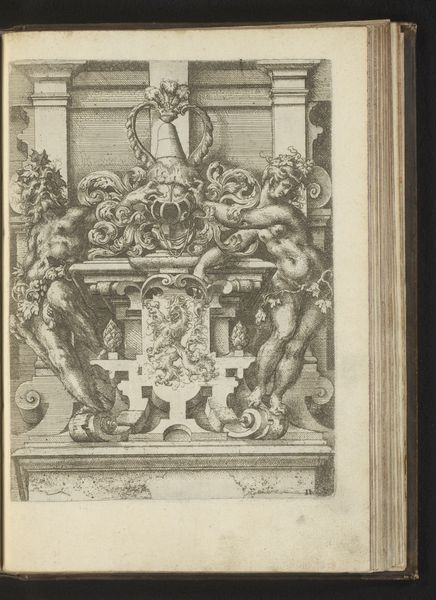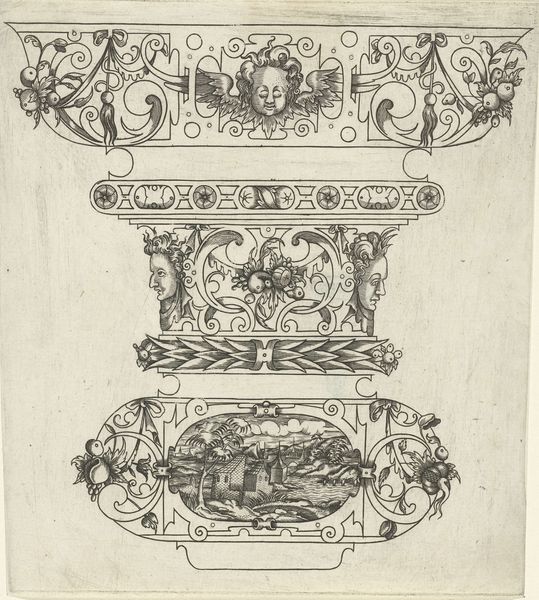
Design for a Dagger Sheath, with Cain and Abel 1539
0:00
0:00
drawing, print, engraving
#
drawing
# print
#
figuration
#
11_renaissance
#
history-painting
#
northern-renaissance
#
engraving
Dimensions: Sheet: 15 7/16 × 3 5/8 in. (39.2 × 9.2 cm)
Copyright: Public Domain
Editor: We’re looking at Heinrich Aldegrever’s “Design for a Dagger Sheath, with Cain and Abel,” created in 1539. It's an engraving, and the level of detail is striking. It’s so ornate and somehow…aggressive? What catches your eye? Curator: The engraving process itself speaks volumes. Aldegrever’s meticulous labor transforming metal into a matrix for endless reproduction reveals the burgeoning industry around arms and, by extension, power, during the Renaissance. Look at how this biblical scene is framed by grotesque ornamentation; the consumable luxury item of the dagger, violently beautified. It's fascinating. Editor: So, you see a commentary on…the weaponization of culture? How the wealthy displayed power through luxury goods, even violent narratives? Curator: Exactly. Consider who would commission such a piece. The elite, eager to flaunt wealth and control. This wasn't just art for art's sake; it was a status symbol, crafted and consumed within a specific socio-economic context. Editor: Do you think Aldegrever was critical of this, or just participating in the market? Curator: That’s the beauty of a materialist lens. Intent is less important than impact. Whether consciously critiquing or not, his art reflects and reinforces a system where violence and beauty are intertwined, sold, and collected. How do the materials used change how you see this piece? Editor: Well, knowing it’s meant for a dagger changes everything. I initially saw an isolated artwork, now I see an object meant to be carried, brandished…a constant reminder of power and, like you said, consumption. I never would've thought of this piece in this way if it weren't for thinking about the materials. Thank you. Curator: It highlights that art doesn't exist in a vacuum; it's a product of its time, deeply embedded in its material conditions.
Comments
No comments
Be the first to comment and join the conversation on the ultimate creative platform.
